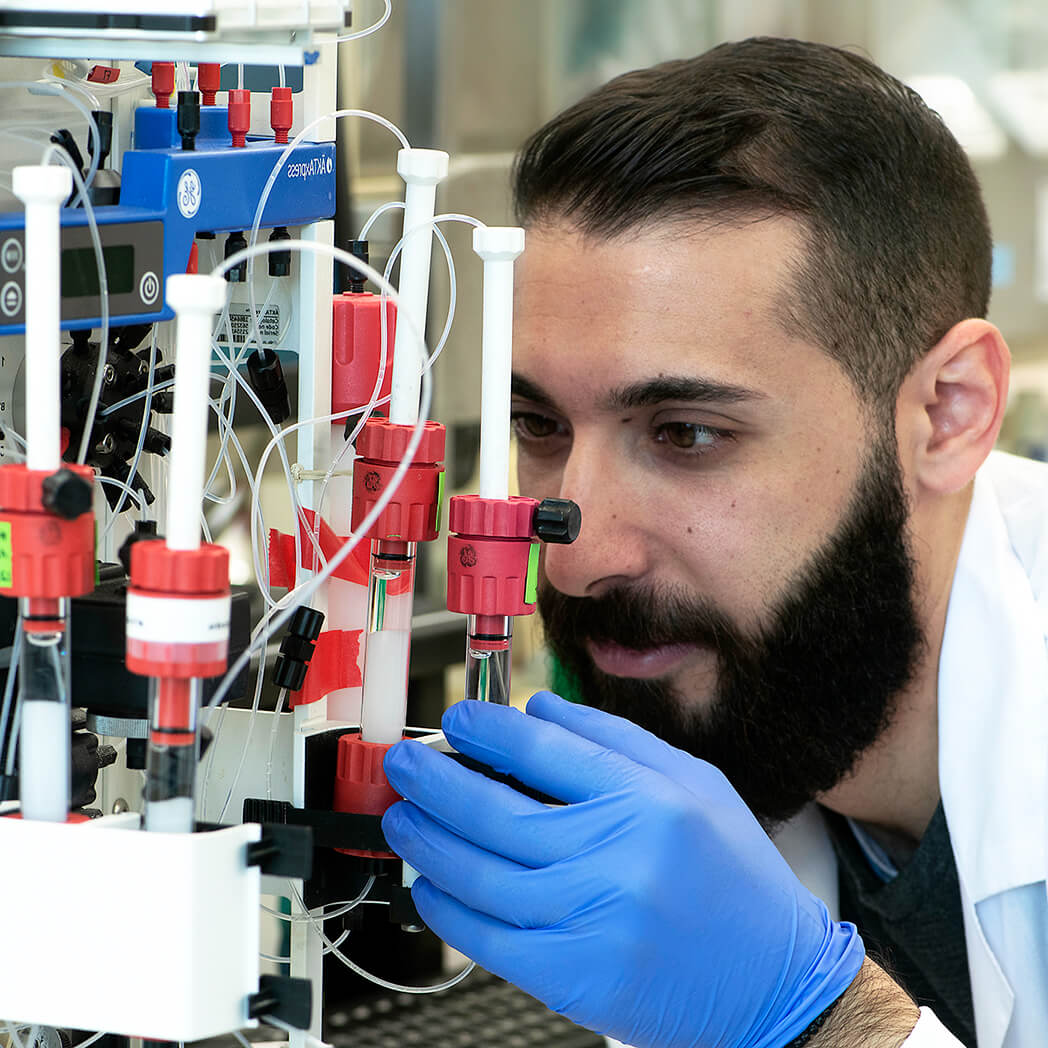Overview
- Peptide (C)RSSQVEQEEKTKPG, corresponding to amino acid residues 189-202 of rat NETO2 (Accession C6K2K4). Extracellular, N-terminus.

 Cell surface detection of NETO2 by direct flow cytometry in live intact mouse J774 macrophage cell line:___ Cells.
Cell surface detection of NETO2 by direct flow cytometry in live intact mouse J774 macrophage cell line:___ Cells.
___ Cells + Rabbit IgG Isotype Control-FITC (#RIC-001-F).
___ Cells + Anti-NETO2 (extracellular)-FITC Antibody (#AGC-046-F), (2.5µg). Cell surface detection of NETO2 by direct flow cytometry in live intact human THP-1 monocytic leukemia cells:___ Cells.
Cell surface detection of NETO2 by direct flow cytometry in live intact human THP-1 monocytic leukemia cells:___ Cells.
___ Cells + Rabbit IgG Isotype Control-FITC (#RIC-001-F).
___ Cells + Anti-NETO2 (extracellular)-FITC Antibody (#AGC-046-F), (5µg).
- Fisher,J.L. (2015) Neuropharmacology 99, 471.
- Fisher, J.L. and Mott, D.D. (2013) J. Physiol. 591, 4711.
- Lomash, R.M. et al. (2017) J. Biol. Chem. 292, 15369.
NETO proteins are auxiliary subunits that play a crucial role in the modulation of the biophysical properties of Kainate-type glutamate receptors (KARs). KARs are activated to modulate synaptic transmission, network excitability and synaptogenesis. NETO proteins modulate their activity both in vivo and in vitro mostly by regulating the surface expression and synaptic targeting of KARs in neurons.
NETO protein expression has been characterized in the adult brain. NETO1 and NETO2 are highly homologous but have different expression patterns and distinct functional effects. High NETO2 expression levels can be found throughout the mammalian brain1,2.
The NETO2 structure reveals a single-pass transmembrane protein that contains an extracellular region with two CUB domains that mediates interactions with KAR subunits. The C-terminus is important for modifying and regulating the synaptic abundance of KARs. The intracellular region of NETO2 can be phosphorylated by various kinases in vitro,which regulates synaptic targeting of KARs3.
Application key:
Species reactivity key:
Anti-NETO2 (extracellular) Antibody (#AGC-046) is a highly specific antibody directed against an epitope of the rat protein. The antibody can be used in western blot and immunohistochemistry applications. It has been designed to recognize NETO2 from human, rat, and mouse samples.
Anti-NETO2 (extracellular)-FITC Antibody (#AGC-046-F) is directly conjugated to fluorescein isothiocyanate (FITC) fluorophore. This conjugated antibody has been developed to be used in immunofluorescent applications such as direct flow cytometry and live cell imaging.
